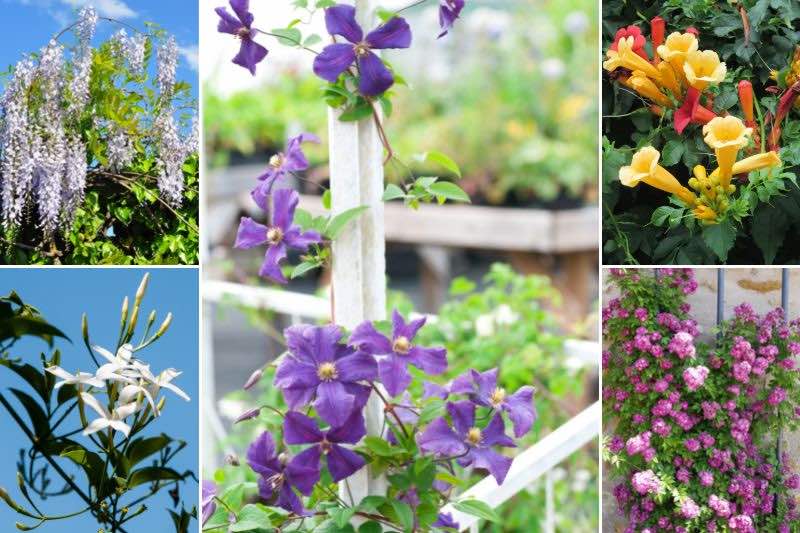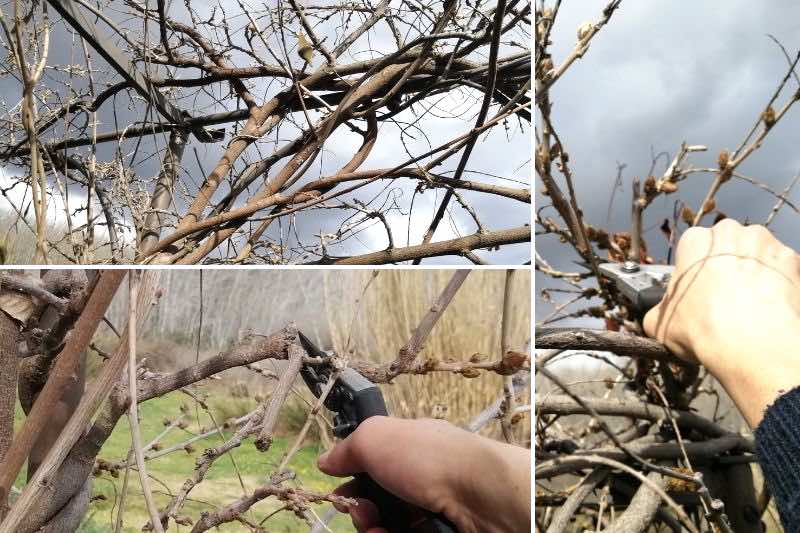Honeysuckle, Clematis, Bougainvillea, Plumbago, Virginia creeper, climbing rose... the climbing plants have the characteristic of being able to climb supports such as trellises, walls, pergolas or trees. They can be used to decorate facades, fences or arbours and thus bring a touch of greenery to your outdoor space.
However, for climbing plants to develop harmoniously and provide attractive flowering, it is important to prune them regularly. Pruning allows control of their growth, stimulates flowering and keeps them healthy.
Pruning of climbing plants should be carried out according to plant variety, size, age and planting location, and some require more specific pruning depending on their growth cycle.
In this tutorial, we will give practical advice on pruning climbing plants... so they remain healthy and always provide beautiful flowering!

Why pruning climbing plants?
Several reasons why pruning climbing plants can be beneficial:
- Encourage growth: by removing dead or damaged parts, plants can concentrate resources on healthy parts.
- Control their size: some climbers can become invasive and take up too much space if not pruned regularly. Pruning keeps them within available space limits.
- Encourage flowering by removing branches that lack flower buds.
- Pruning makes climbing plants more attractive by giving them a more aesthetic shape, removing unsightly branches and giving them a harmonious habit.
When to prune?
Timing for pruning climbing plants depends on plant variety and pruning objective. Generally, the best time to prune climbers is after flowering or in late winter, before new shoots start to form. Here are some examples of pruning periods for the most common ones:
- Wisteria: prune after flowering, usually in summer.
- Jasmine: prune after flowering or in early spring before new growth.
- Clematis: generally, clematis are pruned in late winter, before new growth begins. However, some varieties flower on new shoots, and these can be pruned in summer. To avoid mistakes, refer to our detailed article: How to prune and maintain clematis.
- Bignonia: pruning depends on variety. Some can be pruned after flowering, while others are pruned in late winter or early spring. See our article Pruning bignonias.
- Climbing rose: perpetual varieties are pruned in late winter, between February and April depending on region, and non-perpetual varieties are pruned just after flowering, in July or August, unless you want to enjoy the hips.

It is important to find out about the climbing plant variety in question to know when and how to prune it optimally. In general, avoid pruning too severely, as this can reduce flowering ability.
How to prune?
While how you prune climbers depends on plant variety and pruning objective, here are some general tips:
- Start by removing dead, diseased or damaged branches, as well as branches growing in the wrong direction. This will stimulate growth of new healthy branches.
- Prune branches that have flowered above a bud or a healthy leaf. If the plant flowers on new shoots, prune before new growth begins.
- Remove branches that are too long or that encroach on other plants.
- If your climber is used to cover a trellis or a pergola, prune branches that extend beyond the structure's limits :

- On a young plant, it may be necessary to prune more severely to encourage dense growth and an attractive shape. If the plant is more mature, light pruning is usually sufficient.
Tools required
To prune climbers, you will need:
- a pruning shear well sharpened and disinfected
- a lopper well sharpened and disinfected or a saw for larger stems. Telescopic pole models can be very useful for pruning branches at height
- well-sharpened shears
- gardening gloves, especially for spiny plants such as roses or bougainvillea
- a sturdy step ladder for pruning at height
To learn more :
- Discover how to clean, maintain and protect your gardening tools.
- What to prune in spring? Find out in detail what to prune when warmer weather returns!































![The pruning of climbing plants [plant_taille type="grimpante" season="spring"]](https://www.promessedefleurs.ie/blogwp/wp-content/uploads/2023/03/La-taille-des-plantes-grimpantes.png)
Comments